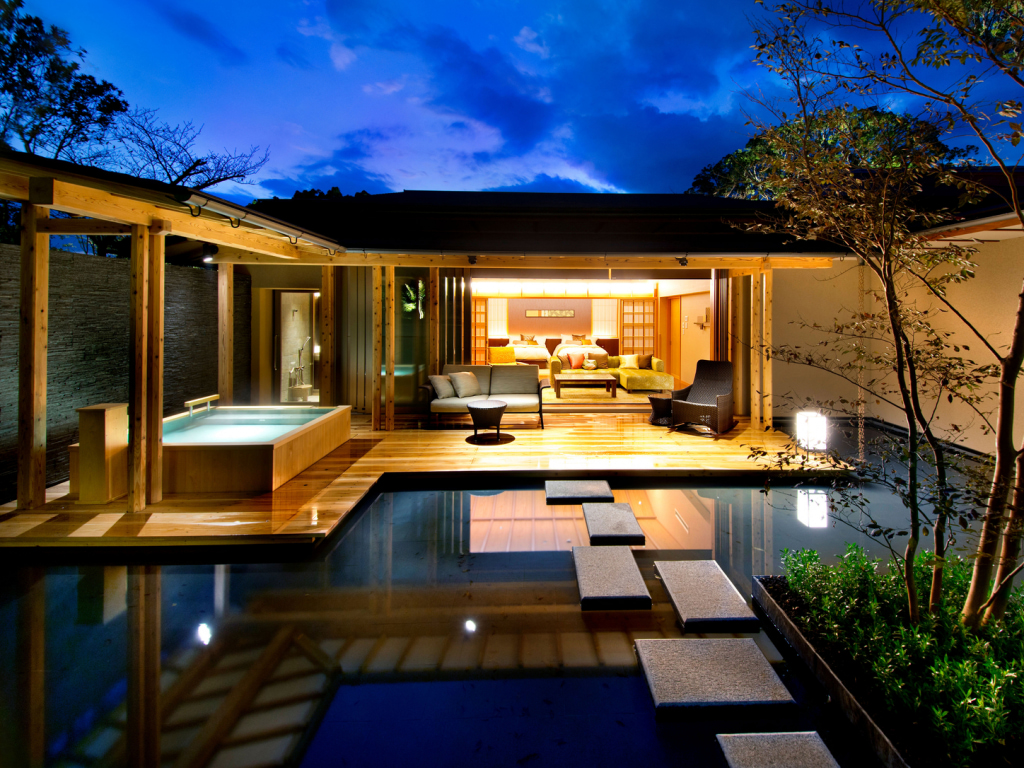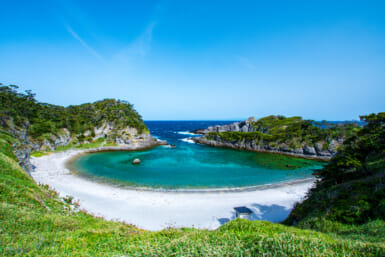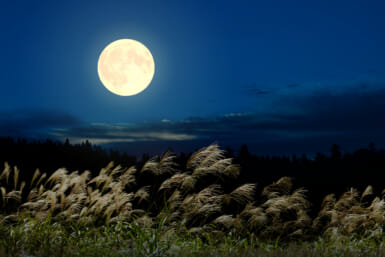As our hotel attendant, Lee, opens the door to our villa suite, I’m busy making a mental note to head back to Zagyosoh’s main building for a dip in the private two-person onsen he’s just shown us. But then, with a knowing smile, Lee guides us through to the sitting room, and with an understated wave of his arm, directs our attention to the terrace. He cannot hide his satisfaction as we spot the square wooden bath with running hot spring water that’s beckoning from one corner. Scrap that mental note – we have our very own private rotenburo (outdoor onsen). What’s more, it’s sitting alongside a shallow pool with cool water that’s black and still and perfect for toe dipping.
As Lee bows and leaves us to change into his-and-hers yukata, which guests are required to wear to dinner at the ryokan’s Japanese restaurant, my partner and I catch each other’s eye with a look that says, “Before we do anything, we’re getting into that onsen!”
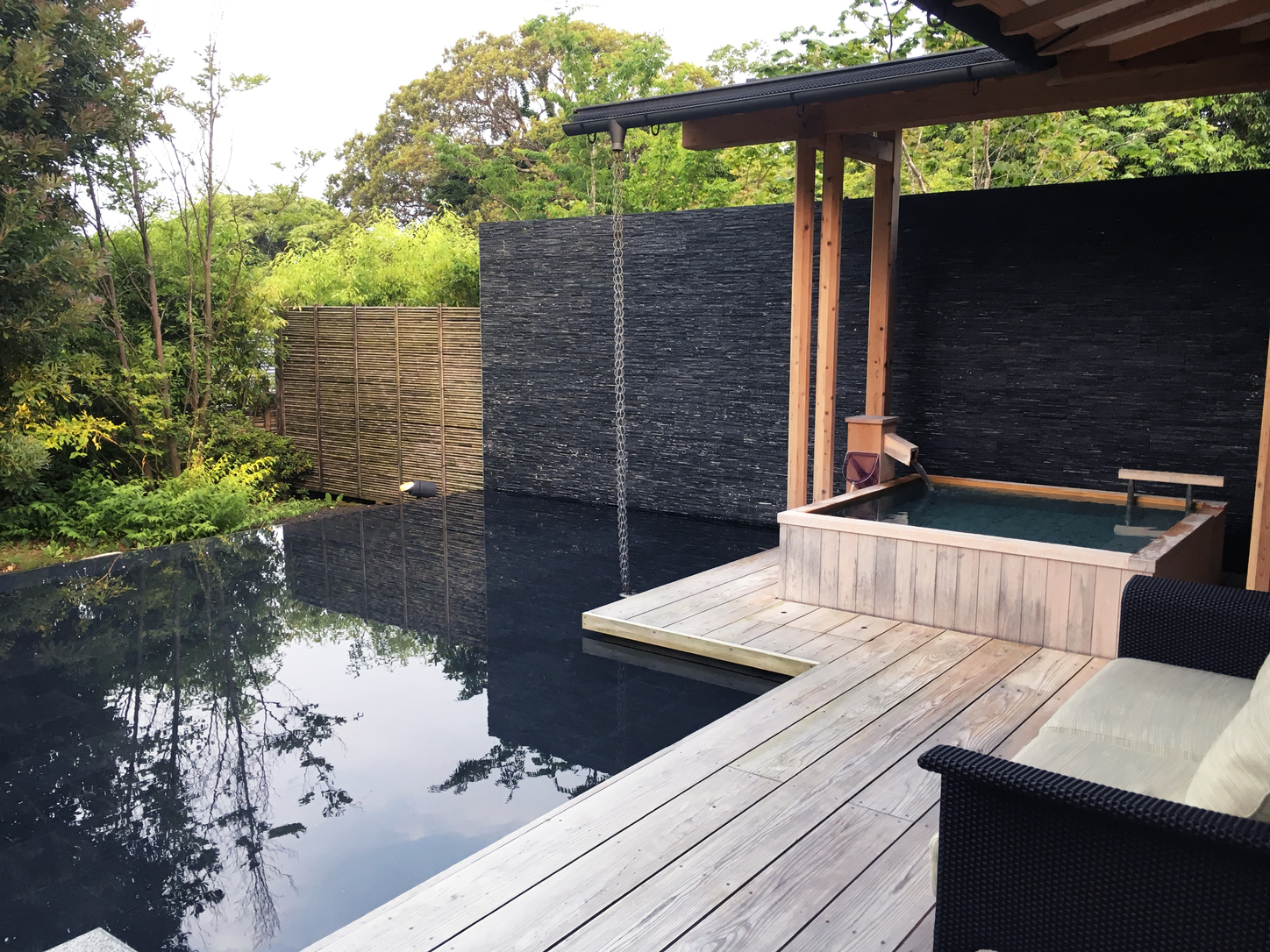
Founded 50 years ago, Zagyosoh – which is set within Izu’s Ukiyama hot spring district as well as the Fuji Hakone National Park – has transformed over the years from a small four-room traditional inn to a luxury resort spanning 16,528 square meters. It’s the first Abba Resort in Japan, and as of 2017 it’s also the first and only Japanese ryokan to be accepted as a member of the prestigious Small Luxury Hotels of the World (SLH) group. Its closest station, Izu-Kogen, is just 120 minutes by train from Tokyo, making it an easy retreat from the city, even if just for a night.
However, you’ll need at least a couple of nights here to experience all that’s on offer. Aside from simply wanting to spend forever in your villa, there’s a beach down the road, a mountain in the other direction, golf courses around the corner, and multiple activities at Zagyosoh itself. One of the ryokan’s aims is to share Japanese culture with both locals and tourists, and to that end they’ve installed an art gallery, Gi no Kokoro, which requires a reservation for viewing and boasts antique kimonos, samurai swords, and artwork. To give you an idea of the history held here, one daisho (matched pair of swords) on display was crafted by the late swordsmith Amata Akitsugu, who was named a Living National Treasure in 1997.
As for Zagyosoh’s hot springs, there are different types to choose from: a stone open-air bath overlooking a colorful moss garden; a hexagon-shaped open-air bath surrounded by trees and bamboo; two large indoor baths that look out onto old bayberry trees through large glass windows; and two private baths that gaze over treetops towards the Izu sea. Stemming from the Ukiyama Hot Springs, the water is surprisingly mild and feels more like fresh spring water than the salty onsen water I’ve become used to in Japan. It’s apparently particularly good for easing rheumatoid arthritis, nerve pain, and bone or joint pain.
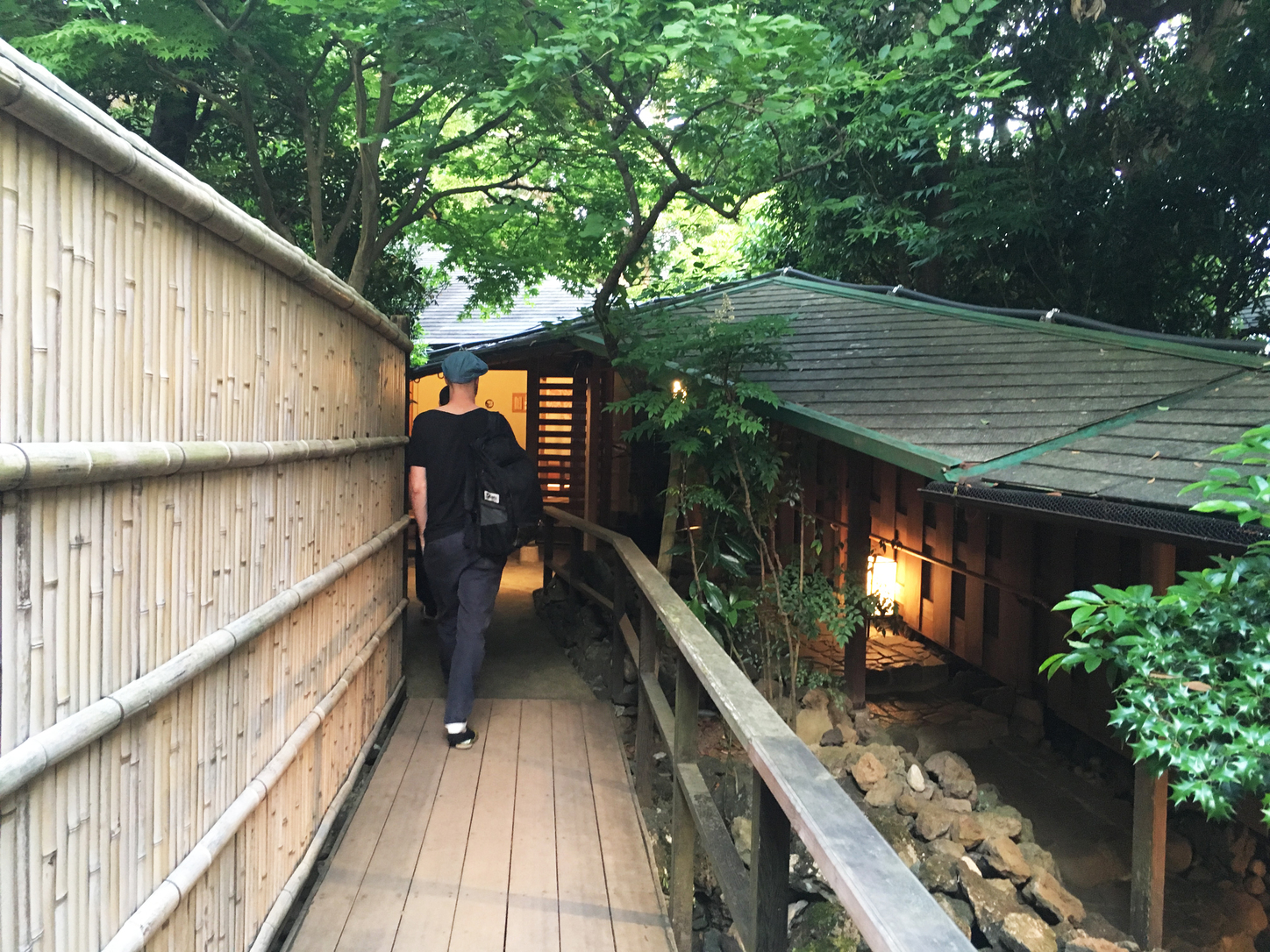
Pathway to the onsen
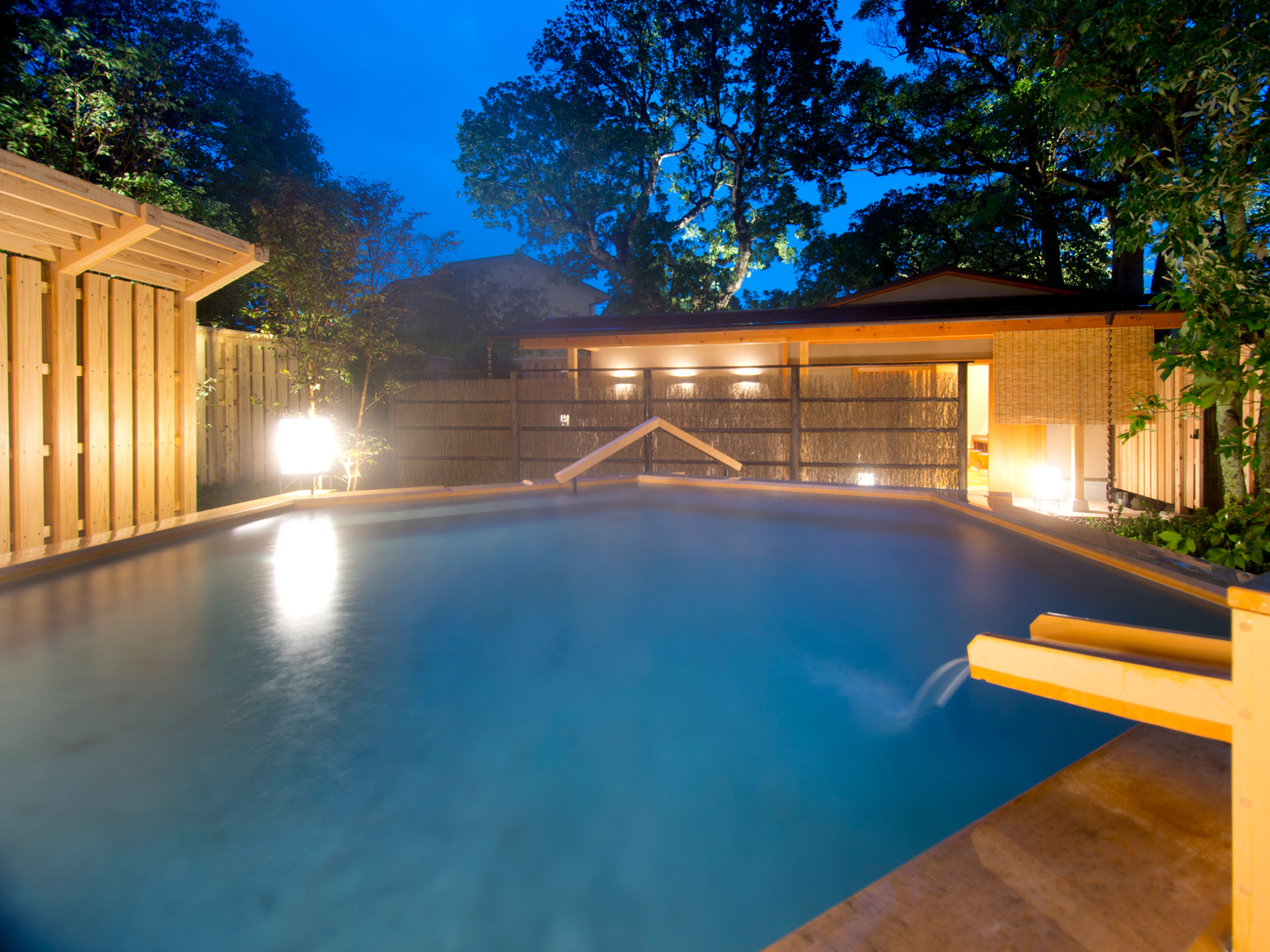
Hexagon-shaped open-air bath
A few steps from the baths is Neen Spa. It’s a hushed tatami-floored space with forest views, a natural soundtrack courtesy of a waterfall just outside the windows, and all kinds of exquisite aromas – whether emanating from the aromatherapy oils you’re asked to choose between for a full-body massage (we picked the scent of “earth”), or the after-treatment skin-brightening tea that features ingredients like lemongrass, lavender, orange peel and hibiscus. Can’t tear yourself away from your villa? You can also request a treatment in privacy of your room.
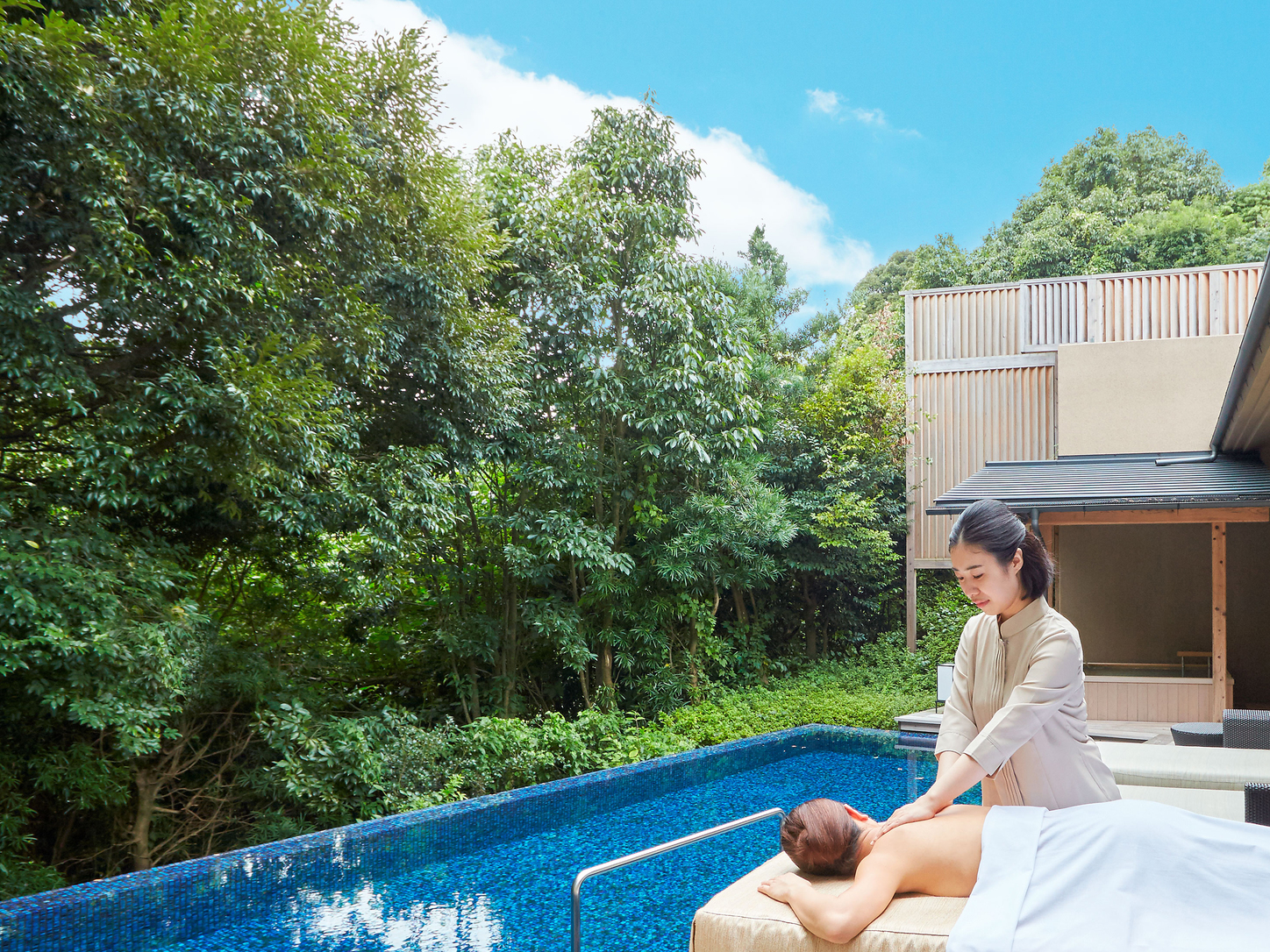
Lee gives us a quick ring on the phone to remind us that our dinner booking at Sakura restaurant is in 15 minutes’ time. Perhaps he caught the look in our eyes before he left us alone with the onsen. With obi sashes tied, we walk a couple of minutes up the road to the main building.
Our meal begins with a dish of Japanese spiny lobster, salmon roe and okura with egg yolk sauce. But the most intriguing part of the appetizer is resting, like a precious gem, inside a glass dome. It’s a small ball made up of white lily bulb (similar to mashed potato in terms of texture but with a gentle, floral flavor) covered in purple and blue-tinged jelly, which is meant to represent the hydrangea flower. Why the hydrangea? Because it’s rainy season in Japan during our visit, and the ajisai, as the flower is called in Japanese, is the one associated with this time of year. They really have thought of everything.
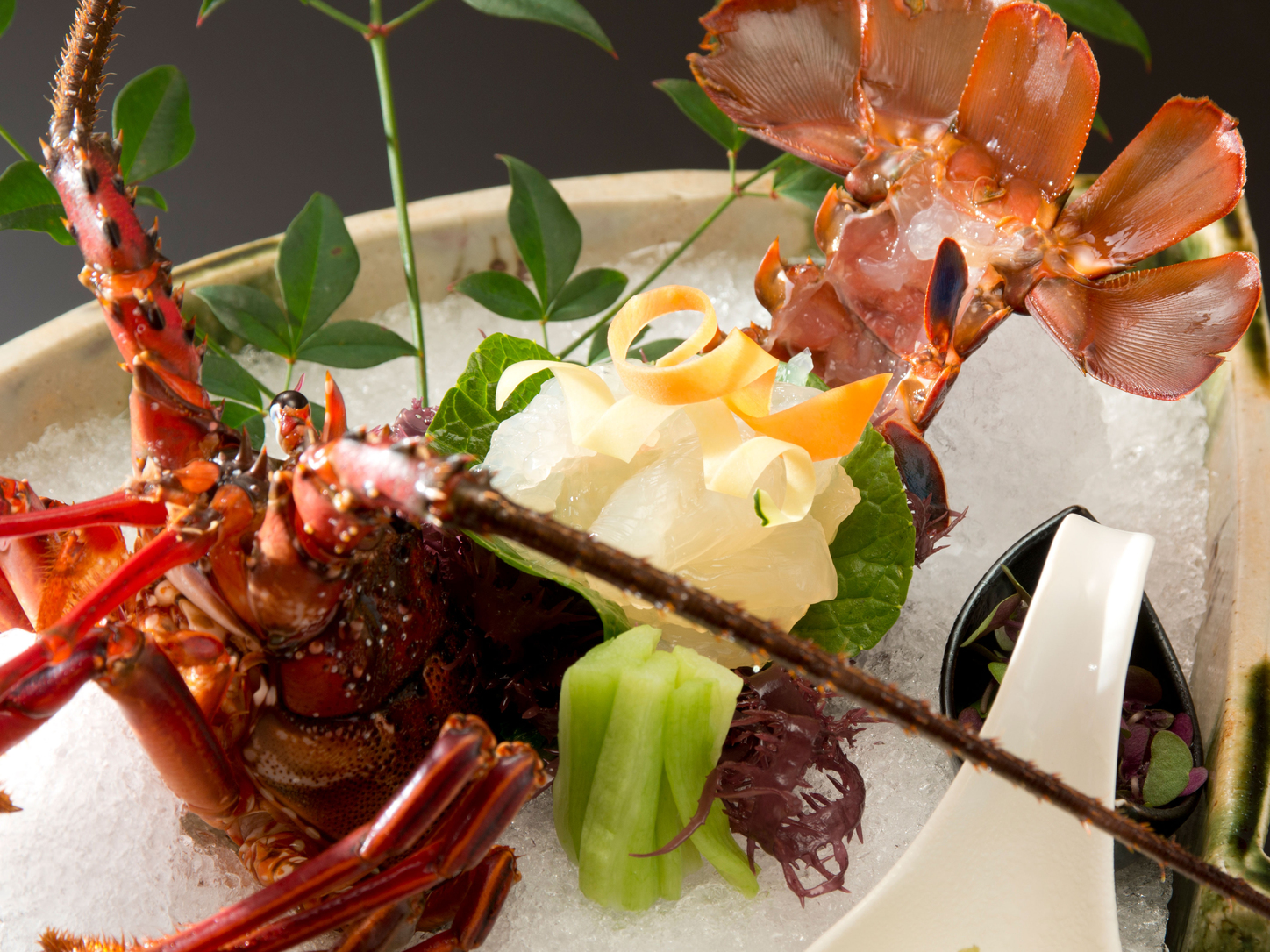
Japanese spiny lobster appetizer
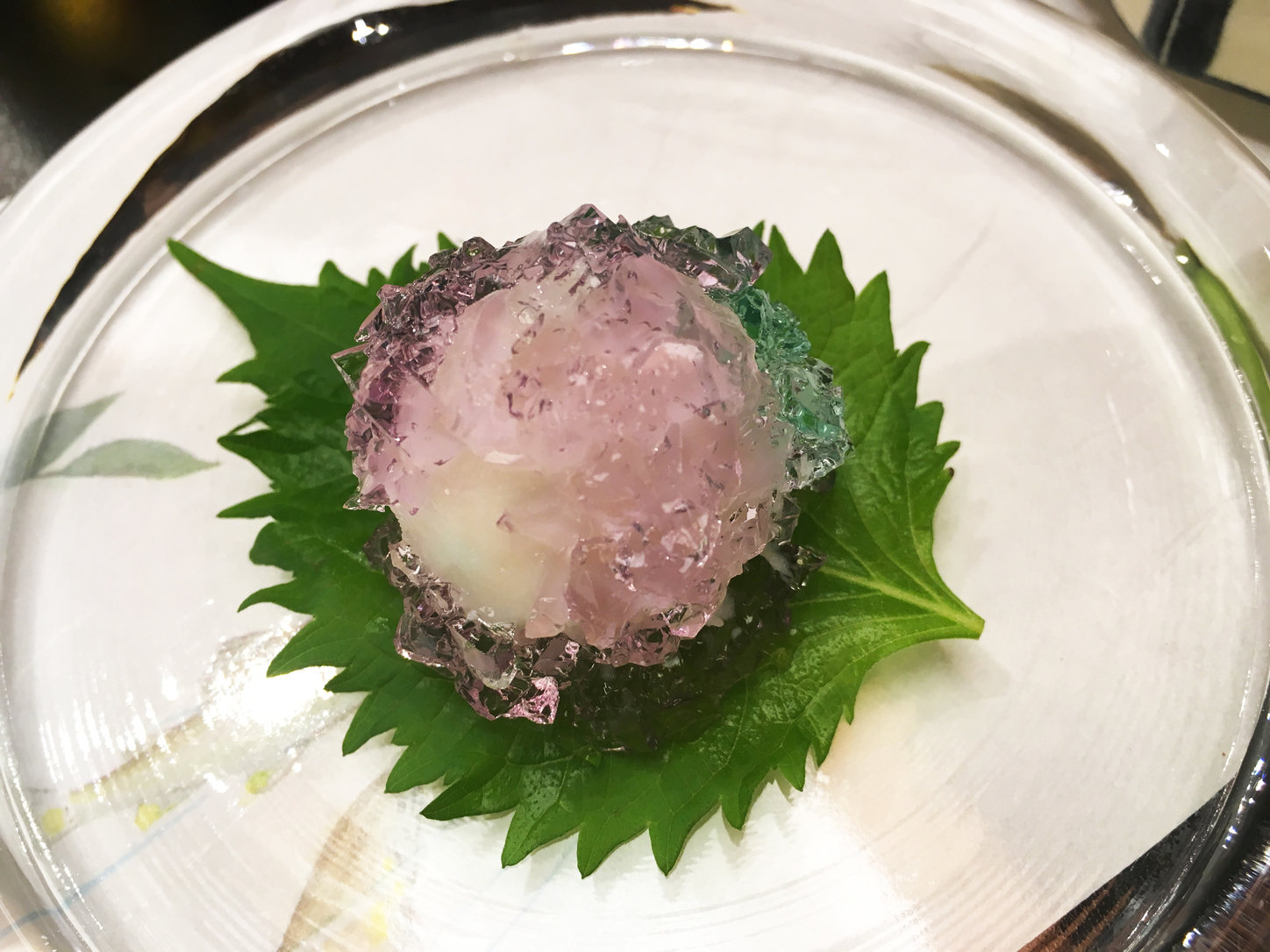
“Hydrangea” lily bulb
This is only the start of a nine-course meal that is something of a journey through Japan’s most revered foods. There’s soup with sweetfish and somen noodles, and sashimi served with fresh Amagi wasabi which we grate ourselves using an oroshigane that has a rough surface made of – wait for it – shark skin.
The surprises keep coming as the chefs unveil a huge triangular cut of bluefin tuna, and then (humbly) show off their sushi-making skills. Next, there’s a perfectly prepared slice of premium Kuroge Wagyu served with beet sauce, red miso soup garnished with grilled eggplant, and Shizuoka organic Setoya Momiji tea brulee for dessert.
For a night cap we descend into the mellow cave of Bar Yoimachi. The lights are low, the atmosphere dreamy. After a little while, several fellow guests head off to the adjacent karaoke rooms, beckoning us to join. My partner and I exchange that look again, and as the clock strikes midnight, we’re back in our private onsen, waiting for the magic spell to break.
Zagyosoh invited Tokyo Weekender for a one-night stay at the ryokan. For more information about the hotel, and for contact details, click here.

